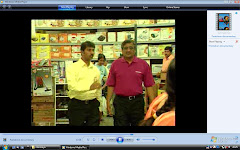When the first Marks and Spencer store was opening up in Mumbai the HR Head from Marks and Spencer-UK had come to visit the site to have a look on the standards of the infrastructures provided to the employees. She took me by surprise when she asked me where the rest rooms are available for the employees as she wanted to check the hygiene and sanitation of the restrooms. She wanted to make sure all the essential requirements of the employees are fulfilled before the opening of the store. Such is the impact of Human resource in the western countries.
Till a few years back human resources in any retail organisation in India used to treat employees within the organisation as just one “employee number” and there used to be no emotional bonding between them. Here as far as I have experienced the human resource department is yet to develop in a very professional manner. Here for many the role of human resource means nothing but administration work such as preparing salaries on month ends and recruiting staffs. Slowly this notion is dying out and most companies have started utilising this department in a more productive manner. Now the administration part is either outsourced or a separate department is created for the same so that the human resources team can concentrate and develop their role in the corporate. They have now started understanding the importance of employees and started developing various methods to retain them.
In a retail store the sales associates or the frontline team is the backbone of the business. Hence the HR team needs to really take care of them and take care of their daily requirements within the store. Because this team needs to continuously stand on the shop floor they tend to get tired very early, and so the HR needs to take care of their health, need to develop motivational factors like incentives or perks to continuously motivate them and also impart knowledge to them and train them periodically so as they become more efficient in their work. If the employees are taken care of they will in turn automatically take care of the organisation. As more time is spent on the shop floor it becomes their second home and hence they tend to become like a family and expect more security, hope and of course love from the HR. A strong faith and trust needs to be developed between the HR and the employees and at the same time strike a good emotional bond between them. They also need to create a productive bridge between the management and the employees. If the same is missing it is reflected on their day to day performance and due to this the business gets affected. The HR needs to come up with new initiatives for the welfare of the staffs. They should provide recreational facilities to them, so as they are not stressed out at the end of their shift. Within a store I strongly feel that at-least once in a month the store HR needs to interact with every individual employee and address to their personal issues, and need to highlight the same to the management. During festival seasons and sale period when the store is busy with activities I feel the store HR also need to be involved with the team, understand the effort they are putting in while working for extra hours, around fifteen to eighteen hours.
The store HR’s job is a tough job as he has to cater to employees coming from different background, with different grievances or queries, need to be able to reply or solve them very positively without creating any imbalance within the shop floor. At times it becomes very difficult for an HR to handle such situations. Experience and everyday learning makes one perfect in this field. One needs to be personally very strong as an individual to handle this role or you tend to lose very early.
I have seen many store HR’s who have joined as executives and then get promoted as managers in the Corporate office after getting exposed to tremendous knowledge and experience in handling employees. They have then started training, mentoring and guiding the sales team on the shop floor.
what's missing in bangalore?
-
what do you miss the most when you move cities?
your friends? your colleagues? your favourite movie halls? eating joints?
your house/ flat/ apartment? the ...
13 years ago
